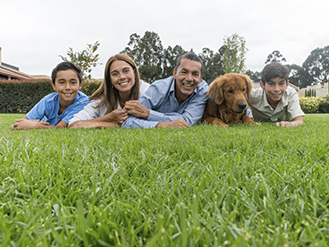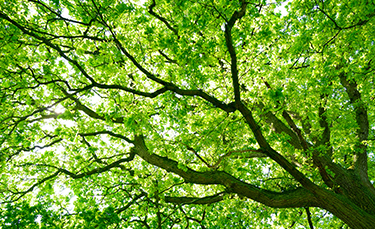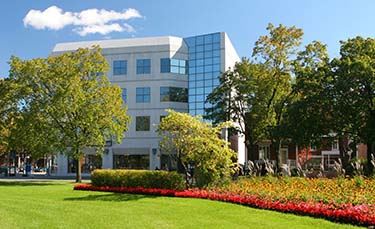Understanding the Important Role Landscape Professionals Play
There are a lot of decisions that go into selecting a career. People often prioritize the ability to do work they love, training and advancement opportunities and careers that offer the chance to make a good living. The professional landscape industry offers all of these desired opportunities – and then some. In fact, the greatest value it brings, though often the least understood, is the opportunity to make a positive difference for families, communities and the environment.
That’s right, the work done by landscape professionals offers the rewards of “doing good.” Take a look at some of the ways their work makes a difference.
Healthy Lawns Keep Families Safe
 Healthy lawns can help protect families and pets from the diseases carried by ticks, mosquitoes, fleas and fire ants.
Healthy lawns can help protect families and pets from the diseases carried by ticks, mosquitoes, fleas and fire ants.
While these insects are small, they can create big problems. For instance, mosquitoes can transmit Zika and West Nile virus; ticks can transmit Lyme disease and Rocky Mountain spotted fever; and fleas are particularly troubling for household pets as they can transfer anemia-causing tapeworms. Proper application of pest preventatives and well-maintained lawns help protect families and pets from the threats they pose. Lawn care professionals receive a lot of training to ensure the work they do helps families.
Healthy Lawns and Landscapes Enrich the Quality of Life in Neighborhoods 
There’s no disputing the facts, communities are strengthened when lawns and landscapes are healthy. They are more peaceful, more enjoyable, and better protected from environmental threats against them. They are great providers, offering incredible health benefits to communities:
- Neighborhoods that incorporate community green spaces have lower incidences of stress, have lower health care costs, and have an improved quality of life (Housley and Wolf).
- Research shows that just looking at plants and trees, even through a window, can reduce stress and lower blood pressure (Housley and Wolf).
- Walking in a natural environment with plants and trees has been shown to improve attention and memory (Marc Berman, University of Michigan).
- Neighborhoods with tree-lined streets and larger yard trees have reduced crime rates. (U.S. Forest Service)
Healthy Landscapes are Good for the Environment

Landscapes are often taken for granted. They are appreciated for their beauty but many people don’t understand the essential value they provide the environment. Here are some facts that may surprise you:
Healthy landscapes…
- Clean the air. Grass and plants play a vital role in capturing dust, smoke particles and other pollutants to make our air cleaner. In fact, lawns alone capture more than 12 million tons of dust (Source: Georgia Turfgrass Foundation); add to that, the additional absorption provided by trees and shrubs and it’s easy to see the role these plants provide in creating healthy air.
- Protect bodies of water. When lawns are well cared for, they absorb contaminated water runoff that might otherwise filter into bodies of water. It may be surprising to learn that an average, healthy lawn can absorb more than 6,000 gallons of water from a single rainfall event. (Source: Journal of Environmental Quality)
- Provide oxygen. Grasses absorb carbon dioxide and break it down into oxygen and carbon. In fact, a 50’x50’ lawn produces enough oxygen for a family of four.
- Act as natural coolants. Lawns can be 31 degrees cooler than asphalt and 20 degrees cooler than bare soil. Trees shading homes can reduce attic temperatures by as much as 40 degrees. These natural coolants reduce the use of electric cooling units, saving energy and reducing electric bills.
- Minimize noise. Lawns and plants dramatically reduce noise pollution; they can reduce noise levels by 20 percent to 30 percent over hard surfaces like concrete and pavement.
What Makes a Healthy Landscape?
Like all living things, grass, shrubs and trees need care and attention to ensure their good health. A healthy lawn does not mean one that’s simply been mowed and given water. A healthy shrub isn’t one that’s merely been pruned. Healthy landscapes need to be managed with a high degree of know-know, the support of science, and often, a dose of chemistry - so that families, communities and our environment can derive the full benefits they provide.
American backyards are where toddlers learn to kick a ball, where teenagers play flashlight tag under the glow of the moon, where pets roam, and where busy adults sink into hammocks and patio chairs to unwind. The lawns and landscapes that provide a backdrop for these memory-making moments are the root of happiness, enabled by the knowledge, expertise, and passion of landscape professionals.

Click now to hear Sean's story.
LOOKING FOR AN IDEAL CAREER CONNECTION?

Apply Now!
Ready to jumpstart your future? Contact NALP about a landscaping apprenticeship, to find a sponsoring company, or to talk with a landscape professional in your area.




